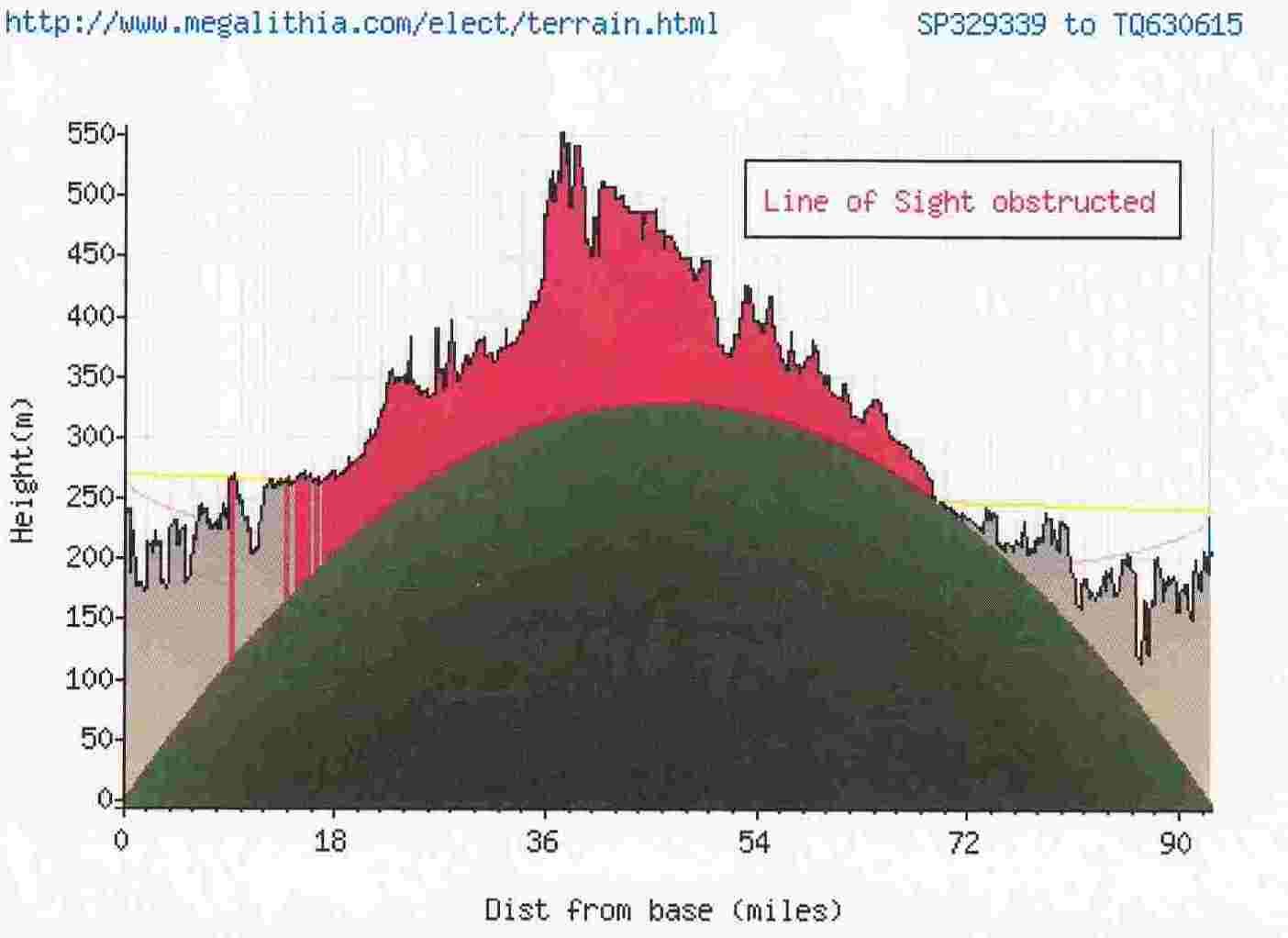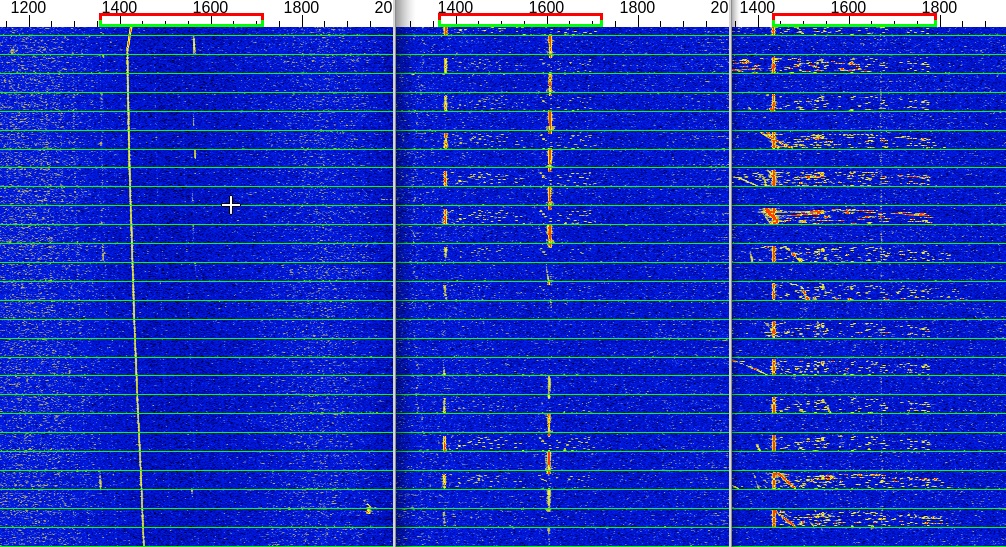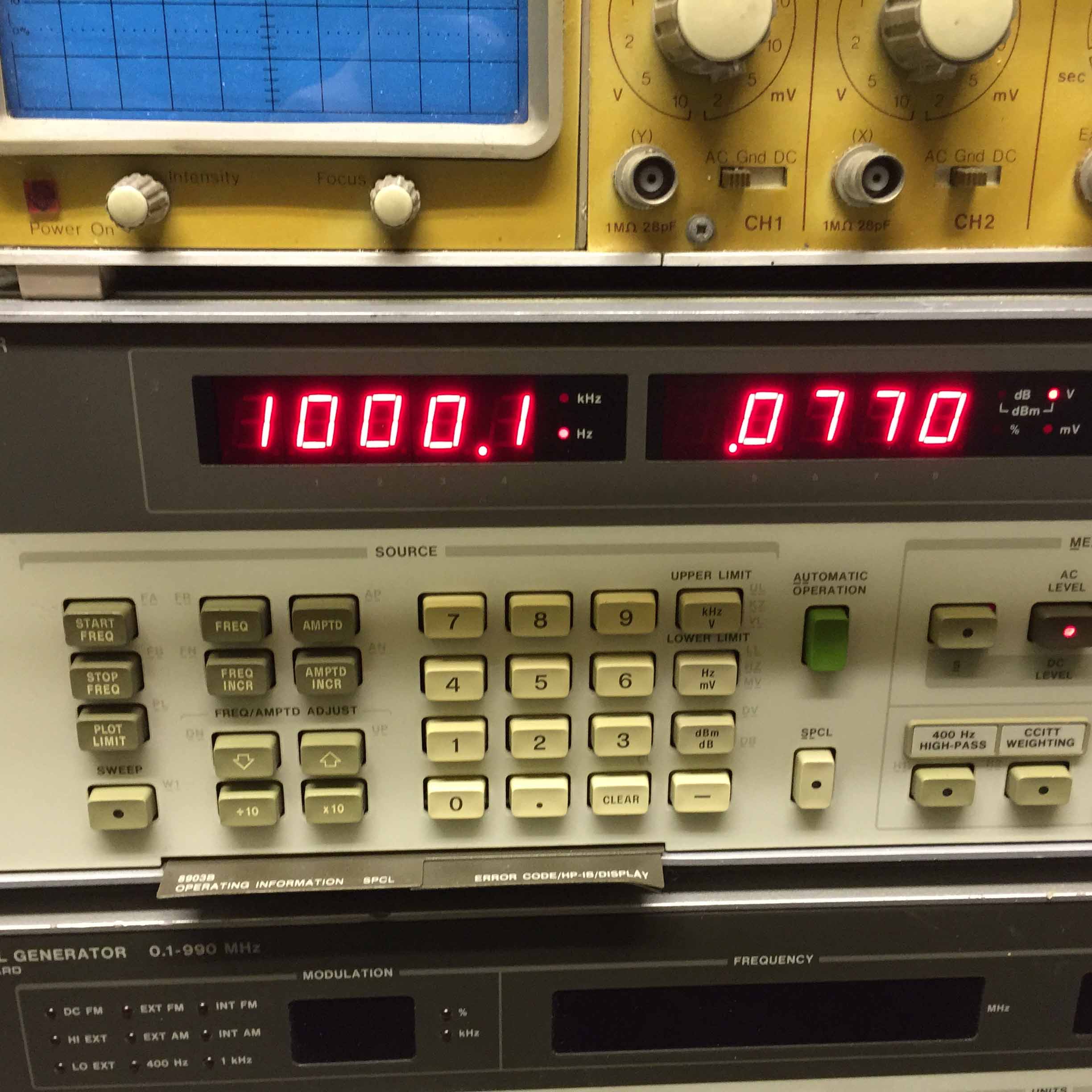Using
GB3UHF
Propagation
monitoring
The beacon can be
used for determining if propagation conditions are enhanced or have
deteriorated over a period of time. Careful monitoring of the beacon can give a
useful indication that conditions are likely to improve, and as such give rise
to an early alert of an opening.
The beacon can be
monitored using JT65B as shown on the Receiving
GB3UHF page, and using the decoding software the beacons signal strength
can be monitored over a period of time, even when inaudible in a conventional
receiver bandwidth.
Another method is
to use your receiver S meter reading to determine relative signal strength
again over a period of time and the data can be logged using software. The
software can then be used to display either in real time or historically, a
graph showing any changes to conditions.
Together with
GB3VHF, there is a great opportunity with GB3UHF to gain valuable information
simultaneously on propagation characteristics at both VHF and UHF frequencies
as shown below in a report from Alwyn G8DOH near Hook Norton, Oxfordshire
(IO92FA) observed on the 15/6/2016.

The path profile
is shown. Receive site height is 239m asl. The pink line shows the boundary of
the first Fresnel zone. Obstructions in this region will weaken the signal by
diffraction. Alwyn says “I calibrated both 2m and 70cm receivers using
calibrated signal generators and the signal levels are referred to the aerial
feed point. Accuracy should be ±1dB”. “Results yesterday (receiving
aerials shown bracketed) were: GB3UHF is at -96 dBm (2x18ele @33m agl) GB3VHF
is at -90 dBm (2x8ele @34m agl) I made a path loss calculation, assuming each
beacon is 10W to a 3ele pointed in the RX direction (RX site is about in the
middle of the beam). This was based on 30W pa output, 1.7 dB coax loss, 3dB
split between the 2 x 3ele yagis and 7.2 dBi gain for each. The 2m atten. is
30dB greater than free space, 70cm is 33dB greater than free space. A rather
good result for the path length, helped by the good take-off at each end.
Signals were very stable, slow fading (5s) of about 1dB on 2m, faster (1s)
fading of about 2dB on 70cm and conditions very poor at time of
measurement”.

John GI7UGV has an
interesting waterfall display of three beacons received at his QTH in IO74DO on
17/6/2016 and he says “I've had a few decodes from the GB3UHF beacon this
morning. Found this a bit of a surprise given I'm in a location few people
would bother trying VHF/UHF in! Antenna wise 8 element x-quad RHCP on 70cm and
5 element horizontal on 2m both at about 5m AGL 10m ASL in the middle of
Newtownards. Frequency movements are this side, been swapping between radios to
get three decoding at once.
0718 -23 2.6 1542
# GB3UHF JO01EH
1028 -18 2.6 1572
# GB3UHF JO01EH
1202 -21 2.6 1356
# GB3UHF JO01EH
1214 -25 2.6 1362
# GB3UHF JO01EH
I'm receiving
GB3UHF, GB3VHF and GB3NGI at the same time at the moment as shown in the image
of the waterfalls, GB3VHF is stronger than normal and GB3NGI is off the back of
beam with lot of aircraft scatter from the SE as usual”.

Alwyn G8DOH took
an off-air measurement of the GB3UHF instantaneous frequency, compared rather
indirectly against GPS, not using an SDR.
The method was as
follows. A Halcyon professional Droitwich-locked OCXO is used as a reference to
a frequency synthesizer set to 432.429000 MHz. Droitwich derives its frequency
from a GPS-disciplined Rubidium source, so this should be accurate to about 1
in 10^11 over periods of seconds to minutes. This signal is coupled into the
feeder from the receive antenna pointing to GB3UHF. The receiver is set to AM.
Using this method, errors in the receiver frequency calibration therefore have
no effect on the result.
The audio output
goes to an Agilent 8903B Audio Analyzer that includes a reciprocal frequency
counter, sampling the frequency 2.5 times per second, and the frequency is
displayed.
If GB3UHF is on
432.430000 the 8903B should show 1000 Hz and as the photo shows it does indeed,
although there is a little bit of fluctuation- at the 0.1 Hz level, but the old
200 Hz offset from the old driver frequency generator is no more.
![]()
![]()
